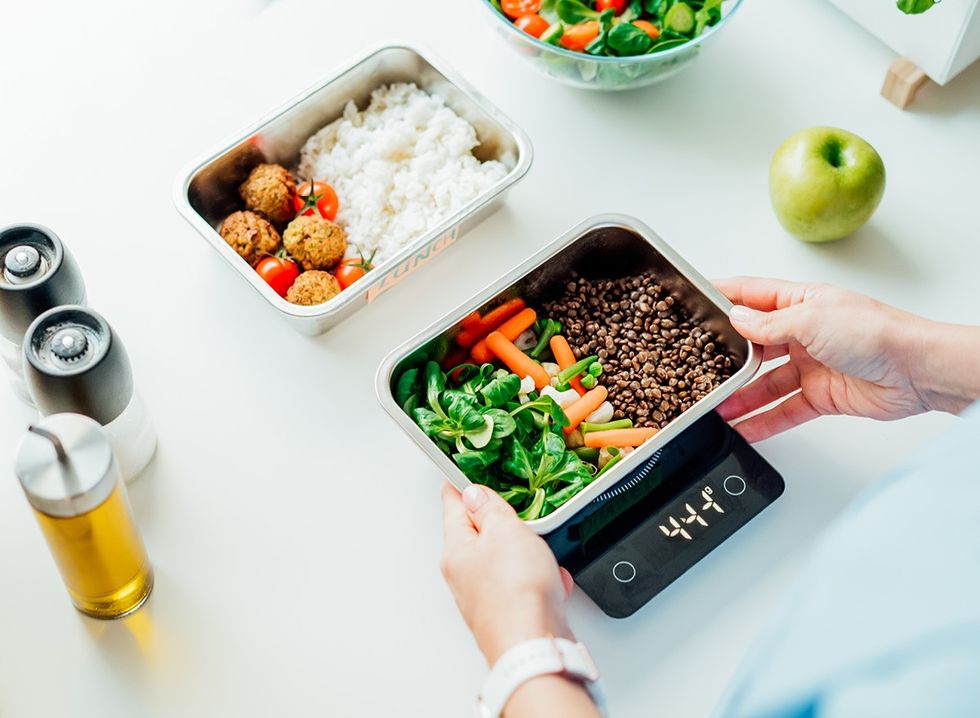When it comes to weight loss, your metabolism plays a crucial role. It determines how efficiently your body converts food into energy and burns calories. But certain foods can slow your metabolism, making it harder to shed unwanted pounds—even if you’re eating less and exercising more. These foods often disrupt your hormone balance, spike blood sugar levels, or cause digestive issues that work against your weight-loss goals. By identifying and cutting out these metabolic culprits, you can give your body the boost it needs to burn fat more effectively. Here are seven common foods that might be sabotaging your progress without you realizing it and what you can replace them with for better results.
Sugary Breakfast Cereals

Sugary cereals are marketed as a quick and easy breakfast option, but they’re one of the worst foods for your metabolism. Packed with refined carbs and added sugars, these cereals cause blood sugar spikes and crashes, leaving you feeling hungry and tired by mid-morning. This rollercoaster effect can slow down your metabolism over time. Instead, choose high-fiber options like oatmeal or unsweetened granola topped with fresh fruit. These alternatives provide steady energy, improve digestion, and keep your metabolism running smoothly throughout the day.
White Bread

White bread is made from refined flour, which strips away fiber and nutrients that are essential for maintaining a healthy metabolism. Without fiber to slow sugar absorption, white bread causes blood sugar levels to spike and then crash, encouraging fat storage and sluggishness. Replacing white bread with whole-grain or sprouted bread can make a big difference. These options are high in fiber and complex carbohydrates, providing sustained energy and supporting your metabolic health.
Fried Foods

Fried foods like french fries, fried chicken, and onion rings are high in unhealthy fats that slow digestion and increase inflammation. This combination can reduce your body’s ability to efficiently burn calories, slowing your metabolism over time. Replace fried foods with baked or air-fried alternatives, which are lower in fat and calories but just as satisfying. Adding herbs and spices can also enhance flavor without compromising your health.
Sugary Beverages

Sodas, sweetened teas, and flavored coffees are loaded with sugar and provide no nutritional value. The excess sugar leads to insulin resistance, making it harder for your body to metabolize food effectively. Over time, this can slow your metabolism and contribute to weight gain. Swap these drinks for water, sparkling water with fruit, or unsweetened herbal teas. Staying hydrated with low-sugar beverages helps regulate your metabolism and keeps you feeling energized.
Processed Meats

Processed meats like bacon, sausages, and deli slices are often high in sodium, preservatives, and unhealthy fats. These ingredients can disrupt your body’s natural processes, leading to water retention and slowed metabolism. Instead, opt for lean proteins like grilled chicken, fish, or plant-based options. These alternatives are easier to digest and provide the amino acids your body needs to maintain muscle mass and a strong metabolism.
Pastries and Desserts

Pastries, cakes, and cookies are packed with sugar and refined carbs, making them a double threat to your metabolism. These foods cause quick blood sugar spikes followed by crashes, leaving you feeling sluggish and hungry for more. Over time, this pattern slows your metabolism and makes it harder to lose weight. Replace these treats with naturally sweet options like fresh fruit or a piece of dark chocolate. These alternatives satisfy your sweet tooth while providing antioxidants and fiber.
Refined Snack Bars

Snack bars might seem like a healthy choice, but many are loaded with refined sugars and artificial ingredients that can sabotage your metabolism. These bars often contain high-fructose corn syrup, which spikes blood sugar and encourages fat storage, especially around the belly. The lack of fiber and protein in many bars also means they don’t keep you full for long, leading to overeating later. Replace refined snack bars with whole-food options like a handful of nuts, seeds, or a piece of fruit paired with nut butter. These alternatives provide sustained energy and nutrients to keep your metabolism running efficiently. And if you enjoyed this article, take advantage of these 15 Quick Ways to Lose Body Fat Percentage in a Week.






















 Shutterstock
Shutterstock Shutterstock
Shutterstock Shutterstock
Shutterstock
 graciouslynourished/Instagram
graciouslynourished/Instagram
 Shutterstock
Shutterstock Shutterstock
Shutterstock Shutterstock
Shutterstock Shutterstock
Shutterstock Shutterstock
Shutterstock Shutterstock
Shutterstock dietdivatara/Instagram
dietdivatara/Instagram

 I'm a Nutritionist and These 9 High-Protein Snacks Keep My Clients Full While Losing 50 Pounds
I'm a Nutritionist and These 9 High-Protein Snacks Keep My Clients Full While Losing 50 Pounds
 Shutterstock
Shutterstock 2. Processed FoodsShutterstock
2. Processed FoodsShutterstock Shutterstock
Shutterstock Shutterstock/Prostock-studio
Shutterstock/Prostock-studio Shutterstock
Shutterstock Pro TipsShutterstock
Pro TipsShutterstock Shutterstock
Shutterstock Shutterstock
Shutterstock Shutterstock
Shutterstock Shutterstock
Shutterstock Don’t Drink as Much AlcoholShutterstock
Don’t Drink as Much AlcoholShutterstock Most Women on GLP-1s Are Making a Few Common MistakesShutterstock
Most Women on GLP-1s Are Making a Few Common MistakesShutterstock Soda and Sugary DrinksShutterstock
Soda and Sugary DrinksShutterstock Shutterstock
Shutterstock Eat BreakfastShutterstock
Eat BreakfastShutterstock And Improve Insulin SensitivityShutterstock
And Improve Insulin SensitivityShutterstock Belly Flab Strip Tip: Sugar and Fat Calories Leave Its Mark on Your BodyShutterstock
Belly Flab Strip Tip: Sugar and Fat Calories Leave Its Mark on Your BodyShutterstock Shutterstock
Shutterstock The Drugs Mimic the GLP-1 Hormone Naturally Produced by the BodyShutterstock
The Drugs Mimic the GLP-1 Hormone Naturally Produced by the BodyShutterstock 3. Deep-Fried ItemsShutterstock
3. Deep-Fried ItemsShutterstock